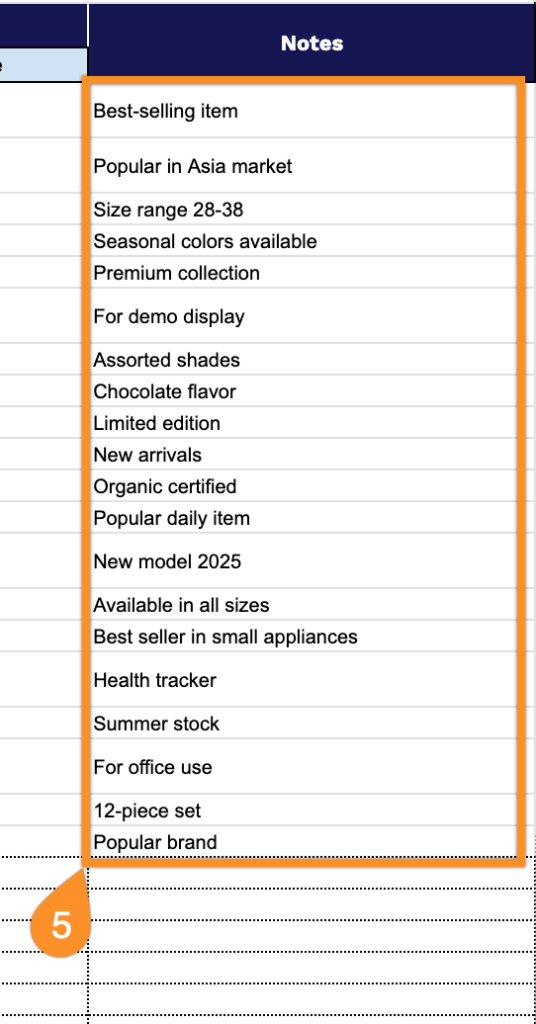Good inventory management is one of those things that sounds boring until you need it. Then it becomes the difference between fulfilling orders smoothly and scrambling to figure out what you actually have in stock.
Our free spreadsheet template takes the guesswork out of tracking your products. It’s straightforward, customizable, and designed to help you maintain accurate records without adding complexity to your day.
Use it to monitor stock levels, organize product information, and track what needs to be reordered.
Available in Google Sheets, Excel, and PDF formats, the template is compatible with your existing system. Download it, add your inventory details, and you’ll have a clearer picture of your stock situation in minutes.
Quick Jump
ToggleWhat Is a Product Inventory Spreadsheet?
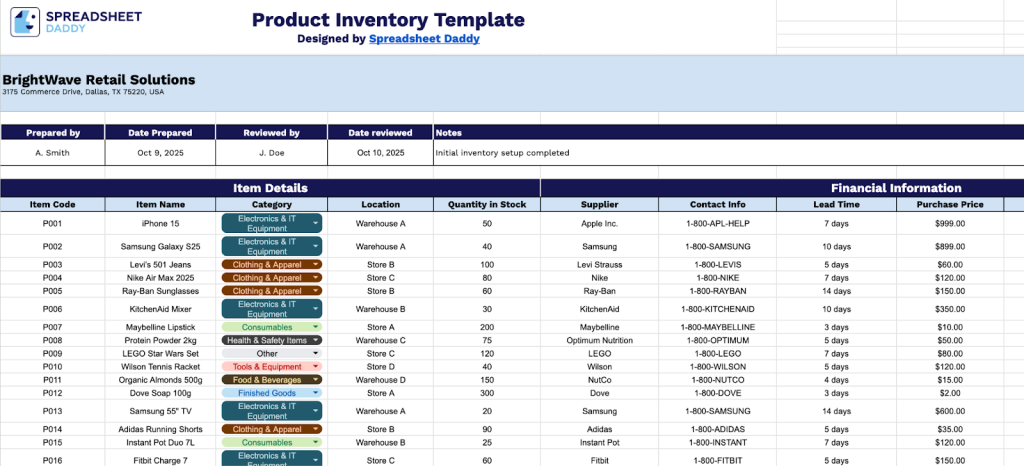
A product inventory spreadsheet is a digital document used to track and manage stock levels, product details, and inventory movements for a business.
This tool enables businesses to monitor their inventory in real-time, prevent stockouts and overstocking, and make informed purchasing decisions.
Download Spreadsheet Daddy’s Free Product Inventory Management Spreadsheet
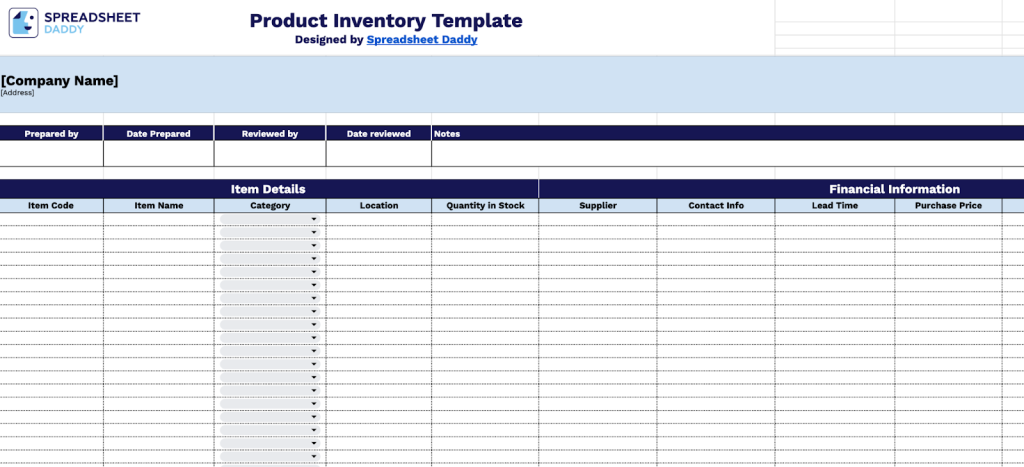
Our Product Inventory Template offers a clean and organized framework for tracking your business’s stock and inventory data.
Customize it to fit your unique workflow by adding new columns or removing the ones that don’t serve your needs.
What’s included
- Comprehensive item identification system: Track products with dedicated fields for Item Code, Item Name, Category, and Location to ensure clear organization and easy retrieval of inventory across multiple storage areas.
- Supplier relationship management: Maintain critical vendor information with Supplier Contact Info and Lead Time columns to streamline reordering processes and ensure timely restocking of inventory items.
- Financial visibility and control: Monitor purchasing costs with the Purchase Price, Date Purchased, and Total Value columns, which automatically calculate inventory worth based on quantity and unit pricing for accurate budget tracking.
- Professional documentation framework: Ensure accountability with header fields for Company Name, Address, Prepared by, Date Prepared, Reviewed by, and Date Reviewed to maintain audit trails and compliance standards.
- Flexible annotation capabilities: Capture essential details and special instructions with multiple Notes sections at both header and item levels to document unique handling requirements, reorder triggers, or business-specific information.
How to Use Our Product Inventory Spreadsheet Template
1. The template can be accessed as an Excel download, a PDF file, or by creating your own Google Sheets copy.
2. Record your company name, location, stock keeper’s details, and the date finished. Add the manager’s name and review date. The Notes field is for any extra observations.

3. Complete the Equipment Details section by documenting all essential identification and classification information:
- Item Code: Enter the unique identifier assigned to track this specific piece of equipment or supply.
- Item Name: Record the complete name or description of the equipment, tool, or supply item.
- Category: Specify the classification type (Raw Materials, Work-in-Progress, Finished Goods, Consumables, etc.).
- Location: Indicate the location of the item on the vehicle (e.g., compartment number, shelf position, or specific bay).
- Quantity in Stock: Document the current number of units available.
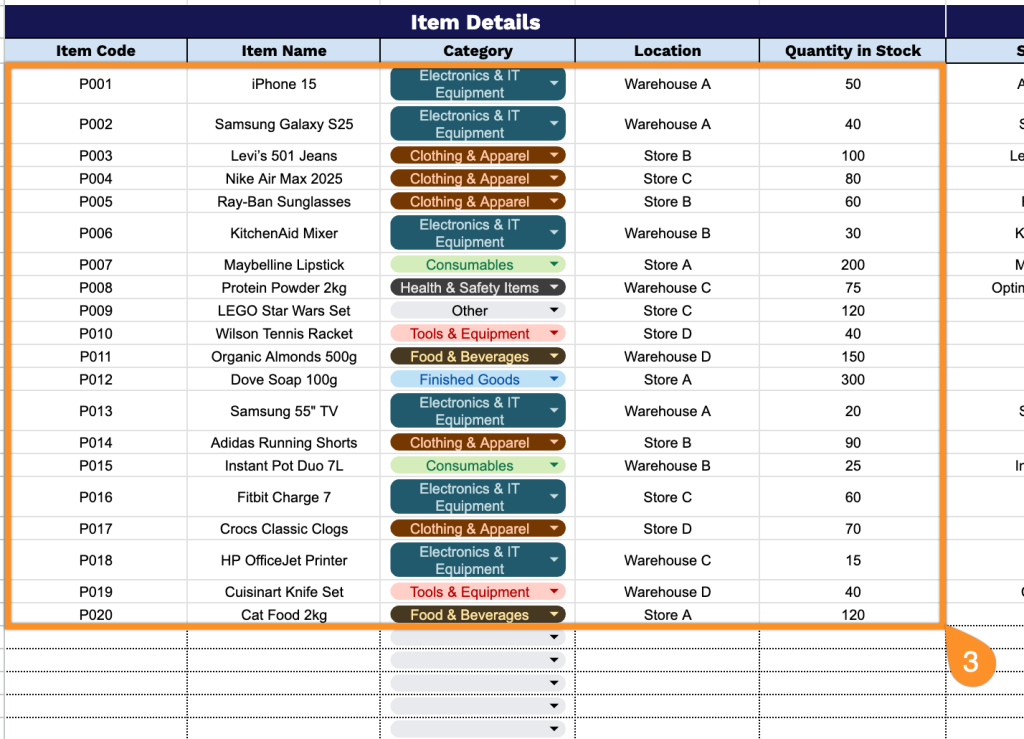
4. Fill in the Financial Information section by recording all procurement and valuation details:
- Supplier: Enter the name of the vendor or company that provided the equipment or supplies.
- Contact Info: Include the supplier’s phone number, email, or primary contact details for reordering.
- Lead Time: Specify the number of days or weeks required for delivery when placing new orders.
- Purchase Price: Record the cost per unit paid when the item was acquired.
- Date Purchased: Document when the equipment or supply was bought initially or received.
- Total Value: The template automatically calculates the combined worth of all units currently in stock.
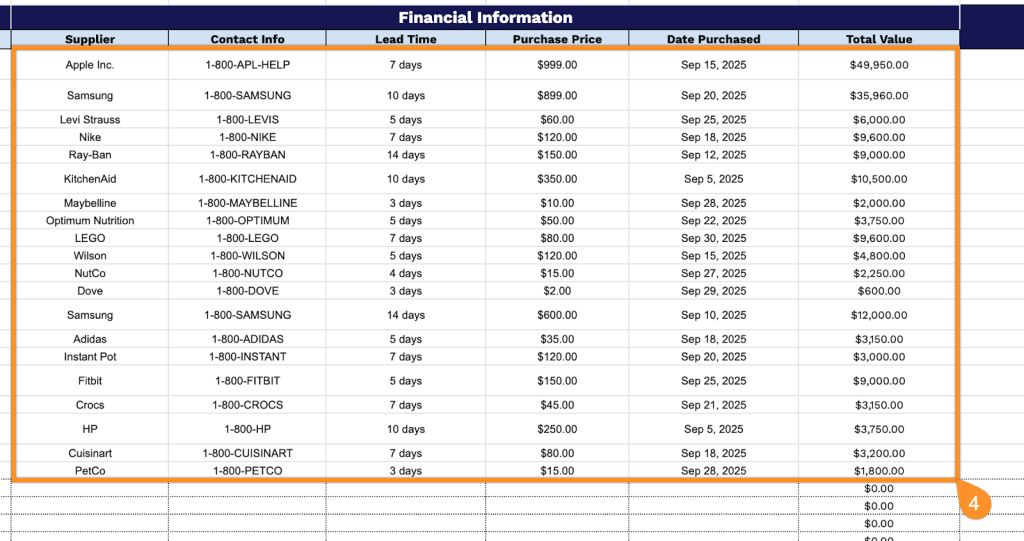
5. Include custom order details, special handling instructions, or other requirements in the Notes column.
